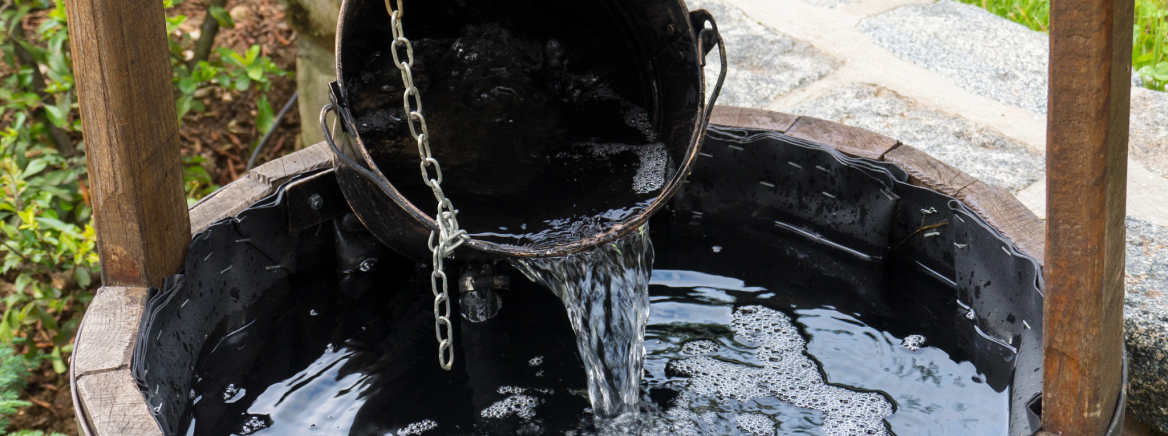Well Protection: Taking Care of Your Well

What is a private well?
A private well refers to a well on your land that provides water (from the groundwater) to you and your family. Sometimes the well may also provide water to a few other homes. The Groundwater and Wastewater Program offers testing and guidance for private and public well owners within Mecklenburg County.
What is a Community well?
A community well serves 15 or more connections or 30 year round residents. Community water systems are regulated by the North Carolina Public Water Supply Program.
What Kind of Problems can you have and what are the signs?
The groundwater in Mecklenburg County is generally considered a safe drinking water source. Occasionally, people have problems that cause your water to look, smell or taste bad. Some of the problems include: a rotten egg odor, blue green stains on in the sink, particles in your water and red stains on the towels. In most cases these problems can be corrected.
Types of Wells
Hand Dug Wells
Hand dug wells are usually three feet in diameter and lined with stone. They are typically found in the woods, adjacent to old homesteads, and on farms. The depth can vary, but most hand dug wells are 15 to 50 feet deep. Open hand dug wells are dangerous to adults, children and animals because of the wide opening and the depth of the hole. The open hand dug and bored well also provides a direct pipeline to the groundwater. The groundwater can become contaminated through storm water runoff or by individuals using the open well for waste disposal. It is also the law in North Carolina to properly close wells that are no longer in use.
Bored Wells
Bored wells are usually one foot in diameter and are cased with cement. Many times the casing of a bored well will extend several inches above the ground surface. They are typically found in the woods, adjacent to old homesteads, and on farms. Bored wells are typically 50 to 100 feet deep. Bored wells are dangerous to adults, children and animals because of the wide opening and the depth of the hole. The bored well also provides a direct pipeline to the groundwater. The groundwater can become contaminated through storm water runoff or by individuals using the open well for waste disposal. It is important to properly close bored wells that are no longer in use.
Drilled Wells
Drilled wells are usually 6.25 inches in diameter and cased down to bedrock. Commonly the casing will stick up several inches above the ground surface. They are typically found in the woods, in residential communities and on farms. The depth can vary greatly but most drilled wells are greater than 80 feet deep. Open drilled wells are dangerous to small children and animals because of the opening and the depth of the hole. The open drilled well also provides a direct pipeline to the groundwater. The groundwater can become contaminated through storm water runoff or by individuals using the open well for waste disposal. It is also the law in North Carolina to properly close wells that are no longer in use.
Parts of the Well
-
The Well Head
-
The Well House
-
Water Storage Tanks
-
The Pump (not shown)
A Check List for the Wellhead
-
Check for a rubber seal (sanitary seal) between the casing and the well cap.
-
Jiggle the cap to check for looseness-- the rubber seal may need replacing and/or the bolts made need tightening.
-
Make sure the access port is plugged.
-
If a vent is present, check that it is inverted and screened.
-
If wires extend through the cap, seal around them with caulking.
-
Do not store chemicals, gasoline, oil, etc. near the wellhead or in the pump house.
-
Check for a well identification tag around the casing.
-
Check that the casing extends at least 6 inches above the ground, more if the area is subject to flooding. Contact a licensed well driller to extend the casing if it is to low.
-
Check around the casing for gaps or holes between it and the soil. If large holes have formed contact a licensed driller to correct the problem.

